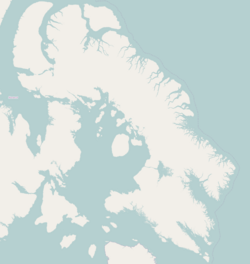| Location | Imiligaarjuit, Qikiqtaaluk Region, Nunavut, Canada |
|---|---|
| Coordinates | 62°39′14″N69°34′11″W / 62.65389°N 69.56972°W |
| Site notes | |
| Archaeologists | Moreau Maxwell, Patricia Sutherland |
| Part of a series on the |
| Norse colonization of North America |
|---|
 |
Tanfield Valley, also referred to as Nanook, is an archaeological site located on Imiligaarjuit (formerly Cape Tanfield), along the southernmost part of the Meta Incognita Peninsula of Baffin Island in the Canadian territory of Nunavut. It is possible that during the Pre-Columbian era the site was known to Norse explorers from Greenland and Iceland. It may be in the region of Helluland , [1] spoken of in the Icelandic Vinland sagas ( Saga of the Greenlanders and Saga of Erik the Red ). [2] [3]
